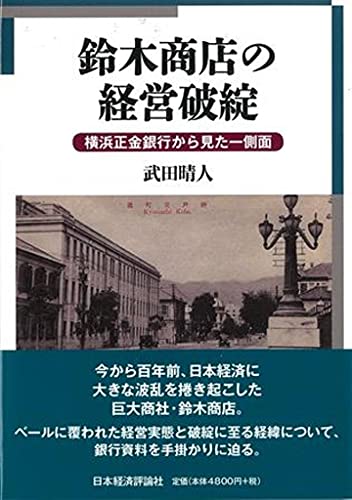3 0 0 0 OA 社会的イノベーション力促進のためのアセスメント・ツール開発~非営利組織を題材に~
非営利組織には、営利組織の利潤に匹敵するような業績判断基準が不在であること、それゆえに非営利組織の経営が困難であることを最初に指摘したのはP.F.ドラッカーであった。たしかに、評価の不在が、非効率な行動を招き、成長の機会を逃している。そこで、ドラッカーの非営利組織論の原点に立ち返りながら「社会変革性」「市民性」「組織安定性」の3つの基本条件を軸に、非営利組織の評価基準を作成した。まず、NPOセクターの現状分析を行なうべく、定量・定性的な分析を行なった。財務データベースをつくり、財政的な持続性にかかる財源の種類など要因分析を行なった。その結果、非営利組織の場合には、収益事業収入に加え、寄付や会費などを組み合わせたほうが財務的な持続性が高いことがわかった。またアンケート調査を実施した。その結果、社会変革の担い手になりたいという願望を持ちながらも組織体制や技術面で不十分なこと、さらには、社会的な信頼性が低く、市民との関係性がより希薄になっていることがわかった。次に、研究者および実践者によるチームを編成し、先の現状分析結果を踏まえ、社会的なイノベーション力を備えた望ましい非営利組織像に到達するためには、どのような条件を満たすことが求められるのか議論した。そして、評価基準策定工程をデザインし、先の議論からエッセンスを抽出し、33の評価基準にまとめた。また、33基準を満たしていることを確認するための105の自己チェック項目もデザインした。これらの研究成果は、6本の研究論文、4冊の図書にまとめられ、5回の学会発表、8回の講演で発表された。なお、研究成果を非営利組織が活用できるよう、これらの基準とチェック項目を「エクセレントNPO基準」と名付け、2冊のブックレットにまとめた。さらに、フォーラム、講演などで説明を行ったが、5大紙、雑誌などで取り上げられた。また、2011年1月には本評価基準を普及すべく、推進母体として「エクセレントNPOをめざそう市民会議」を発足させた。
2 0 0 0 OA 産業革命期の三菱合資会社銀行部
- 著者
- 武田 晴人
- 出版者
- 公益財団法人 三菱経済研究所
- 雑誌
- 三菱史料館論集 (ISSN:13453076)
- 巻号頁・発行日
- vol.2005, no.6, pp.1-51, 2005-03-20 (Released:2023-07-27)
1 0 0 0 OA 三菱史料館開館20周年記念講演会 特別講演 三菱史研究の20年―アーカイブが拓いた地平―
- 著者
- 武田 晴人
- 出版者
- 公益財団法人 三菱経済研究所
- 雑誌
- 三菱史料館論集 (ISSN:13453076)
- 巻号頁・発行日
- vol.2017, no.18, pp.1-32, 2017-03-20 (Released:2023-07-27)
1 0 0 0 OA 岩崎彌之助・小彌太家の家計
- 著者
- 武田 晴人
- 出版者
- 公益財団法人 三菱経済研究所
- 雑誌
- 三菱史料館論集 (ISSN:13453076)
- 巻号頁・発行日
- vol.2021, no.22, pp.45-61, 2021-03-20 (Released:2023-07-27)
1 0 0 0 鈴木商店の経営破綻 : 横浜正金銀行から見た一側面
1 0 0 0 戦後日本の経済復興と朝鮮戦争 (朝鮮戦争と戦後日本)
1 0 0 0 岩崎彌之助・小彌太家の家計
- 著者
- 武田 晴人
- 出版者
- 三菱経済研究所
- 雑誌
- 三菱史料館論集 = Mitsubishi Archives review (ISSN:13453076)
- 巻号頁・発行日
- no.22, pp.45-61, 2021
1 0 0 0 OA 第一次大戦後の古河財閥
- 著者
- 武田 晴人
- 出版者
- 経営史学会
- 雑誌
- 経営史学 (ISSN:03869113)
- 巻号頁・発行日
- vol.15, no.2, pp.30-56,ii, 1980-08-30 (Released:2009-11-06)
- 被引用文献数
- 1
In 1917, the Furukawa family established a family-dominated Konzern, consisting of Furukawa Gomei as the group's holding company, Furukawa Mining, Tokyo-Furukawa Bank and Furukawa Shoji in foreign trade. In the first two years of its operation, the Konzern expanded itself remarkably relying on bank loans. But in the spring of 1920, Furukawa Shoji went to bankruptcy, because it lost heavily in bean speculation in Dairen. In order to make up the loss of 26 million yen, Furukawa Gomei had to dispose of its assets, mainly stocks of its subsidiary companies. Moreover, Furukawa reduced its business and gave up foreign trade activities in 1922 and banking activities in 1931. Thus, the main business of Furukawa became nothing more than mining. As a result, the development of Furukawa-Zaibatsu was retarded and it lagged far behind the other major Konzerns such as Mitsui and Mitsubishi.
1 0 0 0 OA 両大戦間期の対外金融と企業経営
- 著者
- 武田 晴人
- 出版者
- 三菱経済研究所
- 雑誌
- 三菱史料館論集 = Mitsubishi Archives review (ISSN:13453076)
- 巻号頁・発行日
- no.18, pp.1-32, 2017
- 著者
- 武田 晴人
- 出版者
- 青木書店
- 雑誌
- 歴史学研究 (ISSN:03869237)
- 巻号頁・発行日
- no.953, pp.57-60, 2017-01
1 0 0 0 産業革命期の面谷鉱山
- 著者
- 武田 晴人
- 出版者
- 三菱経済研究所
- 雑誌
- 三菱史料館論集 = Mitsubishi Archives review (ISSN:13453076)
- 巻号頁・発行日
- no.15, pp.25-47, 2014
1 0 0 0 産業革命期の槇峰鉱山
- 著者
- 武田 晴人
- 出版者
- 三菱経済研究所
- 雑誌
- 三菱史料館論集 (ISSN:13453076)
- 巻号頁・発行日
- no.14, pp.21-53, 2013



